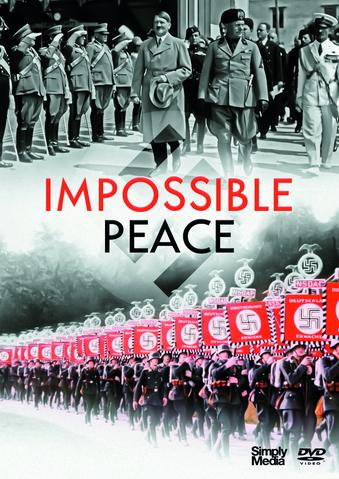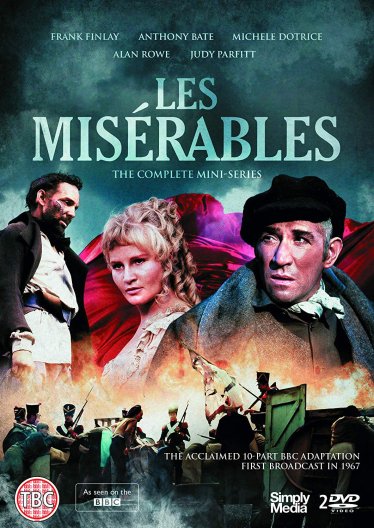
The British Home Front At War is an engrossing five disc set, collecting over 60 short films which are all linked in one way or another to the travails of the British home front during WW2.
Discs one and two are subtitled The Home Guard and Britain’s Citizen Army. One of the earliest films, Citizen’s Army, is in many ways pure Dad’s Army. Its portrait of a plucky groups of individuals, armed with rudimentary and improvised weapons, could have easily fitted into one of Perry and Croft’s scripts.
Rubbing shoulders with these real-life shorts are dramatised pieces which utilise an impressive roster of talent. For example, Dangerous Comment is an Ealing Studios production, directed by John Paddy Carstairs and starring the likes of Frank Lawton, Ronald Culver and Alec Clunes. This one has a slightly odd tone it must be said – designed to demonstrate that careless talk costs lives, it features a jokey coda in which one young man (after breathlessly listening to the story recounted in the film) seems not to have learnt any lessons at all ….
Possibly my favourite from the first few discs is Miss Grant Goes to the Door. Played out like a miniature version of Went The Day Well?, it focuses on two genteel English ladies who are forced to take decisive action against a German paratrooper, disguised as an English officer, who has dropped from the skies. Luckily the Hun gives himself away (due to his inability to pronounce ‘Jarvis Cross’) and after a tense stand-off, harmony is restored to their quiet English village.

The Home Guard and Britain’s Citizen Army would be worth the price of admission alone – it features over thirty films, averaging ten minutes duration each – but this set is bolstered by another three discs. Disc three – London Can Take It! – features that celebrated short film as its centrepiece.
Made by the GPO film unit in 1940 and co-directed by Humphrey Jennings (a documentary film-maker of distinction) it’s a pure slice of propaganda. Narrated by US War correspondent Quentin Reynolds, it serves a duel purpose. Firstly it presents a positive picture of the chirpy and phlegmatic Londoner (keeping calm and carrying on as the Blitz does its worst) whilst also attempting to bring home the plight of Britain to an American audience who at the time seemed to have little interest in the conflict taking place far away from their shores.
Other films – such as Neighbours Under Fire – also reinforce the notion that the whole country was pulling together, keen to help one another during the dark days of the German attacks. It’s another skilfully put together piece – and whilst it may not be telling us the whole truth, there’s no denying the impact that it makes.
Women and Children At War is the theme of disc four. There’s plenty of interest here – such as Jane Brown Changes Her Job, in which Anne Firth (a familiar actress during the 1940’s) plays Jane, a woman keen to do her bit. So she decides to leave her job as a typist and instead goes to work at an aircraft factory. As with a number of the other films it might look a little stilted today, but it’s still easy to appreciate just how potent these shorts would have been during wartime.
Whilst factory work is central to a number of films on this disc, there were other vital wartime occupations for women as well and Ladies Only (produced by the Southern Railways Film Unit) makes the case for working on the railways. Given how British society seemed to reset its gender patterns very quickly following the conclusion of WW2, it’s always slightly eye-opening to see – as here – the cheerful gusto shown by groups of women tackling the sort of manual labour which for decades afterwards was seen as a male-only preserve.
The final disc – Words For Battle, Writers At War – features some big names, pressed into service to help the war effort. The opening film Words For Battle is stirring stuff – Laurence Olivier intones the likes of Jerusalem over carefully selected pieces of footage.
Many notable British writers of the era are also included. J.B. Priestley wrote and narrated Britain At Bay, an inspirational piece which has a similar tone to his BBC wartime broadcasts. Also of interest is A Diary For Timothy, written by E.M. Forster and narrated by Michael Redgrave.
The only negative with this release is that it doesn’t feature a list of the films included (a booklet would have been nice as well, but a basic listing on the back of the sleeve would have been very useful). That niggle apart, this is an absolute treasure trove of material and comes highly recommended.
The British Home Front At War was released by Simply Media, RRP £29.99. It can be ordered here (quoting ARCHIVE10 will apply a 10% discount).







































































